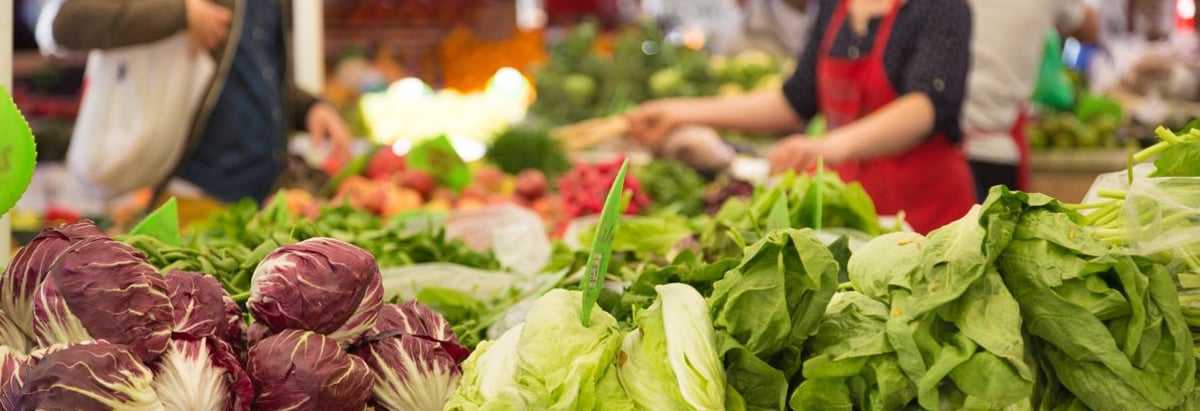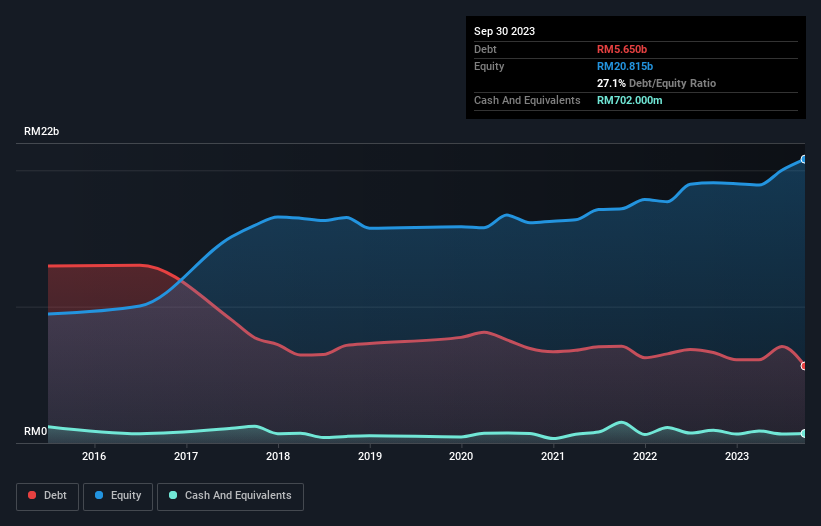Here's Why Sime Darby Plantation Berhad (KLSE:SIMEPLT) Has A Meaningful Debt Burden

David Iben put it well when he said, 'Volatility is not a risk we care about. What we care about is avoiding the permanent loss of capital.' So it might be obvious that you need to consider debt, when you think about how risky any given stock is, because too much debt can sink a company. As with many other companies Sime Darby Plantation Berhad (KLSE:SIMEPLT) makes use of debt. But is this debt a concern to shareholders?
What Risk Does Debt Bring?
Debt and other liabilities become risky for a business when it cannot easily fulfill those obligations, either with free cash flow or by raising capital at an attractive price. Ultimately, if the company can't fulfill its legal obligations to repay debt, shareholders could walk away with nothing. However, a more common (but still painful) scenario is that it has to raise new equity capital at a low price, thus permanently diluting shareholders. Having said that, the most common situation is where a company manages its debt reasonably well - and to its own advantage. When we examine debt levels, we first consider both cash and debt levels, together.
Check out our latest analysis for Sime Darby Plantation Berhad
What Is Sime Darby Plantation Berhad's Net Debt?
You can click the graphic below for the historical numbers, but it shows that Sime Darby Plantation Berhad had RM5.65b of debt in September 2023, down from RM6.63b, one year before. On the flip side, it has RM702.0m in cash leading to net debt of about RM4.95b.

How Healthy Is Sime Darby Plantation Berhad's Balance Sheet?
Zooming in on the latest balance sheet data, we can see that Sime Darby Plantation Berhad had liabilities of RM4.67b due within 12 months and liabilities of RM6.79b due beyond that. On the other hand, it had cash of RM702.0m and RM2.72b worth of receivables due within a year. So its liabilities outweigh the sum of its cash and (near-term) receivables by RM8.03b.
Sime Darby Plantation Berhad has a market capitalization of RM31.1b, so it could very likely raise cash to ameliorate its balance sheet, if the need arose. However, it is still worthwhile taking a close look at its ability to pay off debt.
In order to size up a company's debt relative to its earnings, we calculate its net debt divided by its earnings before interest, tax, depreciation, and amortization (EBITDA) and its earnings before interest and tax (EBIT) divided by its interest expense (its interest cover). Thus we consider debt relative to earnings both with and without depreciation and amortization expenses.
Sime Darby Plantation Berhad's net debt is only 1.2 times its EBITDA. And its EBIT covers its interest expense a whopping 15.8 times over. So we're pretty relaxed about its super-conservative use of debt. In fact Sime Darby Plantation Berhad's saving grace is its low debt levels, because its EBIT has tanked 26% in the last twelve months. When a company sees its earnings tank, it can sometimes find its relationships with its lenders turn sour. There's no doubt that we learn most about debt from the balance sheet. But ultimately the future profitability of the business will decide if Sime Darby Plantation Berhad can strengthen its balance sheet over time. So if you want to see what the professionals think, you might find this free report on analyst profit forecasts to be interesting.
Finally, while the tax-man may adore accounting profits, lenders only accept cold hard cash. So we always check how much of that EBIT is translated into free cash flow. In the last three years, Sime Darby Plantation Berhad's free cash flow amounted to 44% of its EBIT, less than we'd expect. That's not great, when it comes to paying down debt.
Our View
Sime Darby Plantation Berhad's EBIT growth rate and conversion of EBIT to free cash flow definitely weigh on it, in our esteem. But the good news is it seems to be able to cover its interest expense with its EBIT with ease. We think that Sime Darby Plantation Berhad's debt does make it a bit risky, after considering the aforementioned data points together. That's not necessarily a bad thing, since leverage can boost returns on equity, but it is something to be aware of. There's no doubt that we learn most about debt from the balance sheet. But ultimately, every company can contain risks that exist outside of the balance sheet. Case in point: We've spotted 1 warning sign for Sime Darby Plantation Berhad you should be aware of.
If you're interested in investing in businesses that can grow profits without the burden of debt, then check out this free list of growing businesses that have net cash on the balance sheet.
New: Manage All Your Stock Portfolios in One Place
We've created the ultimate portfolio companion for stock investors, and it's free.
• Connect an unlimited number of Portfolios and see your total in one currency
• Be alerted to new Warning Signs or Risks via email or mobile
• Track the Fair Value of your stocks
Have feedback on this article? Concerned about the content? Get in touch with us directly. Alternatively, email editorial-team (at) simplywallst.com.
This article by Simply Wall St is general in nature. We provide commentary based on historical data and analyst forecasts only using an unbiased methodology and our articles are not intended to be financial advice. It does not constitute a recommendation to buy or sell any stock, and does not take account of your objectives, or your financial situation. We aim to bring you long-term focused analysis driven by fundamental data. Note that our analysis may not factor in the latest price-sensitive company announcements or qualitative material. Simply Wall St has no position in any stocks mentioned.
About KLSE:SDG
SD Guthrie Berhad
Operates as an integrated plantations company in Malaysia and internationally.
Flawless balance sheet with solid track record.
Similar Companies
Market Insights
Community Narratives



